Capital:
Beijing
Currency
Yuan
Best time to visit:
The best times to visit China are from March to May and from September to early November: this way you can avoid the bitter cold of winter and the bitter heat of summer.
In a word:
Nihao (hi)
Vaccines
None
Warnings:
– The cities are very populated so organize yourself well for attractions or trains/planes: risk of long queues
At the table:
It is not easy to decipher a menu written in Chinese. Luckily there are often pictures. You can also point with your finger to the dish of a neighbor that inspires us the most. Often the cuisine is very spicy or uses a lot of coriander (which I hate, my personal taste) but I can assure you that it is one of the best cuisines in the world! It has nothing to do with that of Chinese restaurants in Italy! We fell in love with ravioli in all shapes and sauces!

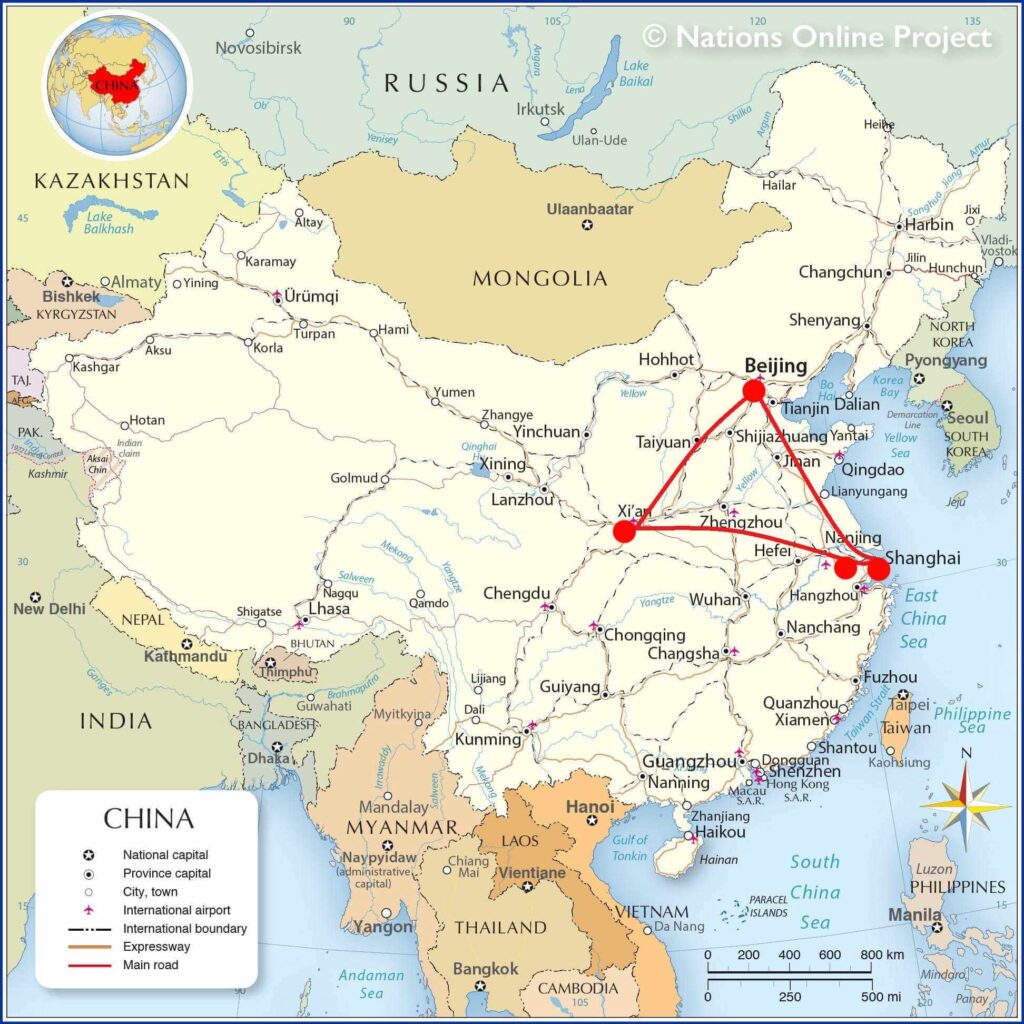
Essential experiences:
Cross the entrance of the Forbidden City or Tiananmen Square in Beijing; Climb a small piece of the Great Wall of China at Mutianyu; Marvel at the majesty of the Terracotta Army in Xian; Admire the skyline of Shanghai
China is a real continent, an immense giant. It would take months to be able to say we have explored it a bit but we only have two weeks this time and, thanks to the opportunity of a free visa (for stays up to 15 days), we take advantage of it for a first “taste” to discover the Beijing – Xian – Shanghai triangle all by train!
China is a world apart, technologically it lives in the world it has built and does not accept the Western one, so everything, for us, becomes a little more complicated but always doable!
Goodbye Google, Gmail, Facebook, WhatsApp, Instagram… goodbye communications in English; credit card payments… we need to face this new world with the right approach!
Our suggested itinerary (14 days) | |
four days: | Beijing (visit Forbidden City, Tiananmen Square, Mao Mausoleum; Lama Temple); Mutianyu (Great Wall of China) |
three days: | Xian (Visit Terracotta Army; Bell Tower & Drum Tower; Big Wild Goose Pagoda & Muslim Quarter; City Wall Walk) |
four days: | Shanghai (The Bund visit; Jade Buddha Temple; Shanghai Tower and Yu Garden visit); Zhu Jia Jiao (boat ride and visit to the Zen gardens) |
three days: | Beijing (Visit to the Summer Palace and the Temple of Heaven; Tour in Qinmen District) |
For the first three days in Beijing we stay at the Coffizz Hotel, a nice hotel not far from the Forbidden City and on the beautiful pedestrian street of Wangfujing Dajie. In the evening it comes alive with people dancing along the edges of the road, doing tai chi, playing badminton, taking pictures of Western tourists, buying Chinese products or colorful ice creams…
We end up eating noodles and ravioli in one of the many local restaurants where the menus are totally incomprehensible and you end up ordering whatever the funniest ideograms inspire you to, hoping it isn't too spicy or full of coriander... but even these "surprise" dinners have their charm!
Forbidden City
In the heart of Beijing stands the most important and best preserved monumental complex in China, as well as the largest Imperial Palace in the world: the Forbidden City!
The striking name comes from the ban on entry imposed on ordinary citizens for about 500 years. A series of elaborate rituals and a rigid protocol contributed to covering with an otherworldly atmosphere what was the residence of the Ming and Qing Emperors until the founding of the Republic.
In the past, anyone who entered the complex without an official invitation paid with their life (immediate execution was in fact foreseen).
Entrance tickets can be purchased from a week before, at 2 pm Italian time, online, but in a few seconds the 40,000 available tickets are sold out! Now we can guarantee you that there is no problem because with a line of no more than 5 minutes, at the ticket office, you will very easily have your coveted ticket! Even the much feared line for entry was resolved in an orderly 15-minute snake (2-3 backpack and passport checks included)
NB Always carry your passport with you because they will ask for it everywhere!

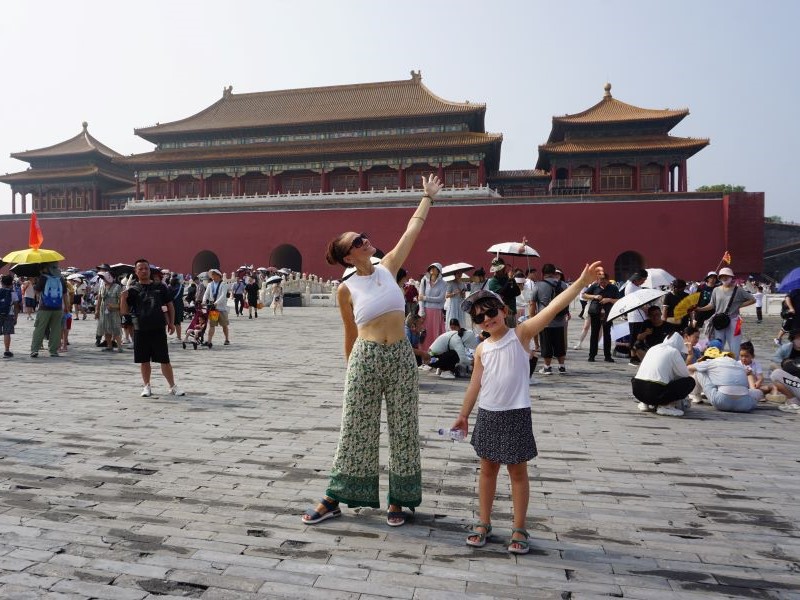
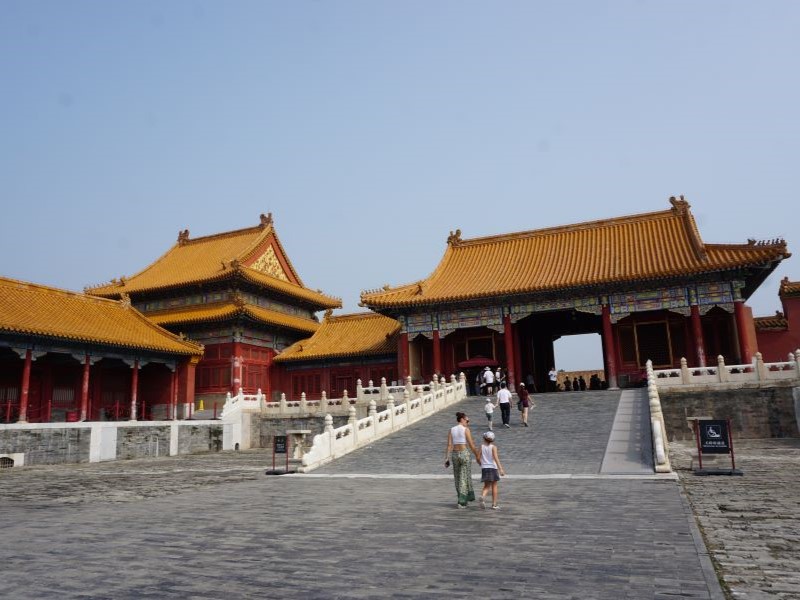
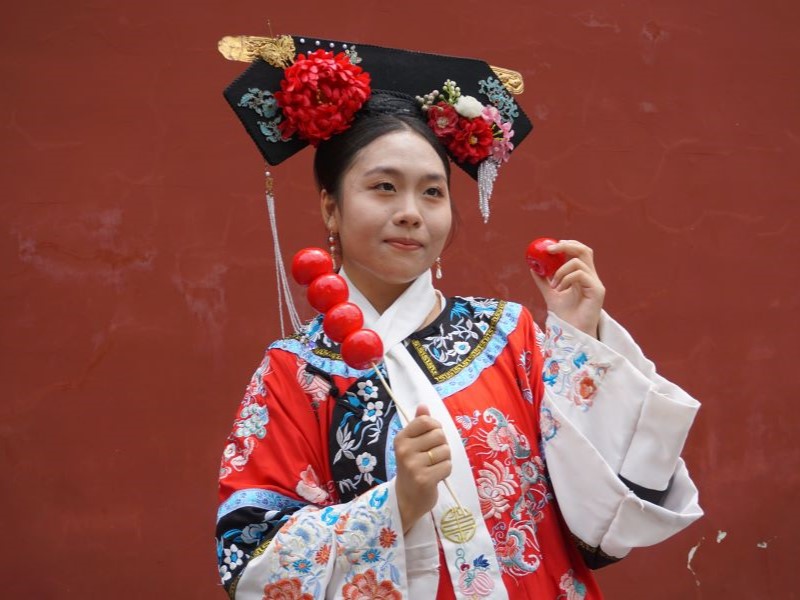


I won't dwell on the explanation of the immense complex (there's Lonely Planet for that) but the sensations felt were incredible! Thinking about what you experienced inside, the fairy-tale names of the doors, courtyards, palaces... you find yourself crossing the "Stream of Golden Waters" to enter through the "Gate of Supreme Harmony" inside the "Palace of Literary Glory", you will pass by the "Dragon Throne" towards the "Palace of Perfect Harmony" or that of "Celestial Purity" or even that of "Earthly Tranquility" and I could go on for a long time with fairy-tale names but all appropriate because you will really feel like you are inside an adventure book!
You go from chaotic avenues, overcrowded with Chinese on holiday to other (parallel) almost empty ones where you can really enjoy and appreciate the sense of fairy-tale peace of a few centuries ago.
Visiting it in this way allowed us to admire it more intensely, making us daydream… every courtyard was an incredible glimpse, every building a unique picturesque image!
About 1.5 km away, surrounded by austere 1950s Soviet-style buildings and enclosed by a large fence, stands the largest public square in the world.
I was impressed by Chairman Mao's Mausoleum, one of the iconic images of Beijing.
Built in 1976 immediately after the death of Mao Tse Tung, the Chinese still show an almost religious respect when they find themselves in front of Mao's body; preserved in a glass case, the embalmed body of the "Great Helmsman" is wrapped in a large red flag complete with hammer and sickle.
Do not forget to:
By metro we reach the “Lama Temple”.
This exceptional temple is one of the most important stars of Beijing Buddhism; here, among thick clouds of incense, you can admire magnificent roofs, extraordinary frescoes, majestic decorative arches, tapestries, Tibetan prayer wheels…
Founded in 1750, it is the most famous of the Tibetan Buddhist temples outside Tibet.
Opposite there is the small Confucius Temple plus the various Hutong, the characteristic Chinese alleys!
“He who has not climbed the Great Wall is not a real man” (Mao Tse Tung)
An essential stop for anyone visiting China, the Great Wall is the country’s most extraordinary feat of engineering: it stretches as far as the eye can see from the Liaoning Province, where some scattered ruined sections remain here and there, to Xinjiang, whose relentless sands cover its fragments, passing through the Gobi Desert, scattered with wind-whipped ruins.
The most famous and best preserved sections wind majestically across the hills of Beijing Municipality.
It is commonly believed that the Great Wall is a continuous structure, but in reality it is a series of masonry fortifications interspersed with natural defenses such as steep-sided mountains that made the bastions built more than 2,000 years ago superfluous.
It took hundreds of thousands of workers (many of them political or war prisoners) about 10 years to build.
The signal towers allowed the alarm to be raised with gunpowder explosions to inform the government in Beijing of enemy movements.
There are various access points to the Great Wall, we chose Mutianyu, an hour and a half by taxi from Beijing and ideal for families thanks to the panoramic cable car that takes you up and the toboggan (a kind of bobsleigh) that brings you back down whizzing!
Famous for its Ming era watchtowers and excellent views, it extends for 3 km and hosts 26 towers! We recommend booking a taxi (Didi), maybe the day before, and leaving at 5 in the morning so as to be there when the ticket office opens at 7 and catch the first bus up to the Wall! Only in this way will you be able to enjoy this unique spectacle almost alone and free from the many groups of tourists that will crowd the area shortly after… bring a spare t-shirt because you will soak it with sweat!
In the evening we leave on a night train that, in 12 hours, comfortable in a sleeper, will take us to Xian!
Get to the station early because of the many checks of backpacks, passports, tickets and always among so many people.
The imposing Beijing station is divided into many waiting rooms depending on the destination but if you are travelling with children, elderly people or disabled people you can wait for your train comfortably in another common room with a children's area, super clean bathrooms and the possibility of checking in half an hour earlier than the others!
Our train arrives… on time, very clean!
We booked three berths in second class, the second class carriages have open compartments and consist of six beds (two low, two medium and two high); each bed has a pillow and blanket (comfortable and clean); there is a hot water dispenser (for noodles and herbal teas), sinks, toilets and a great sense of tranquility!
Beautiful experience that we will try two more times during this trip and very fun for the children too! The air conditioning is very strong: cover yourself well!
Please note: we purchased all the train tickets about a month before on trip.com (you pay a 6 euro commission per person) but it is only a purchase reservation because the actual issuing will take place only 15 days before departure.
Here we are in historic Xian! We will be staying at the elegant JW Marriott Hotel Xian: stunning!
Joanna and her team welcomed us very warmly with a spa with pool and gym on the 24th floor, a classy reception on the 38th with an adjoining bar… Our two rooms are superb, every detail is taken care of down to the smallest details… like the bathtub in the center of the room or the bathroom, all glass, which disappears from view thanks to sliding panels. Every now and then when traveling you need to pamper yourself a little, don't you think?
Shaanxi is the cradle of China. Heart of the Qin Dynasty, whose warrior emperor united much of China's territory under a single government for the first time, this province saw the birth of Chinese civilization and when Beijing was not even known by name, Xian was already a bustling cosmopolitan capital along the Silk Road!
Xian is a little gem: the Ming-era city walls are intact, the narrow streets of the labyrinthine Muslim quarter are full of merchants selling everything!
It is of course famous for the terracotta army, considered the eighth wonder of the world!
An underground army of thousands of life-sized soldiers has silently protected the soul of the man who first unified China for more than 2,000 years. Perhaps the emperor was terrified of the spirits who would greet him in the afterlife, or perhaps he hoped that his rule would continue after death. Whatever the explanation, the warriors who defend his tomb today represent one of the greatest testimonies to ancient Chinese civilization.
The discovery of this treasure occurred completely by chance when in 1974 some farmers who were digging a well stumbled upon an underground vault that held thousands of life-size soldiers and horses in battle gear. 8000 soldiers, all different from each other.
In the late afternoon we return to Xian (about an hour by taxi) to admire the two most famous towers: the Bell Tower and the Drum Tower.
The Bell Tower: once housed a large bell that was rung at dawn while the Drum Tower heralded the fall of night! These two towers also mark the entrance to the vibrant Muslim Quarter, where the Hui (Islamic minority) community has lived since the 7th century!
Along the crowded alleys you will see butchers, factories that produce sesame oil, small mosques hidden behind huge wooden portals, sellers of meat skewers (too spicy), pearl sellers, men wearing white skullcaps; in the evening it is very suggestive, alive, chaotic, engaging!
We are right in front of the city wall, Xian is one of the few cities in China to still have it intact! Built in 1370 during the Ming dynasty, it reaches a height of 12 meters and forms a rectangle of 14 km. The walls can be walked (3-4 hours) or, even more fun, by bike (maybe at sunset!)
Tip: before starting the tour of the city walls, take a walk along the “via dei calligrafi” (calligraphers’ street), here, old craftsmen will enchant you by writing perfect ideograms following ancient procedures with ancient techniques!
Big Wild Goose Pagoda.
The most famous landmark in Xian's cityscape dominates the surrounding modern buildings. It was completed in the mid-1600s to house Buddhist suras brought back from theIndia from Xuan Zang, a monk who, along with other linguists, devoted the last 19 years of his life to translating the scriptures into Chinese.
His travels inspired one of the most famous works of Chinese literature: “Journey to the West”; this epic journey was conducted along the Silk Road and the resulting novel has as its protagonist a monk named Xuan, protected along the way by three disciples, including the famous “monkey” and it was this latter that inspired films, shows and even a cartoon: “The Great Adventures of Goku, Saiyuki and Dragon Ball”.
I was very impressed to see so many girls dressed in traditional Chinese clothes, complete with makeup and hair, wandering around the city with their friends taking pictures of each other!
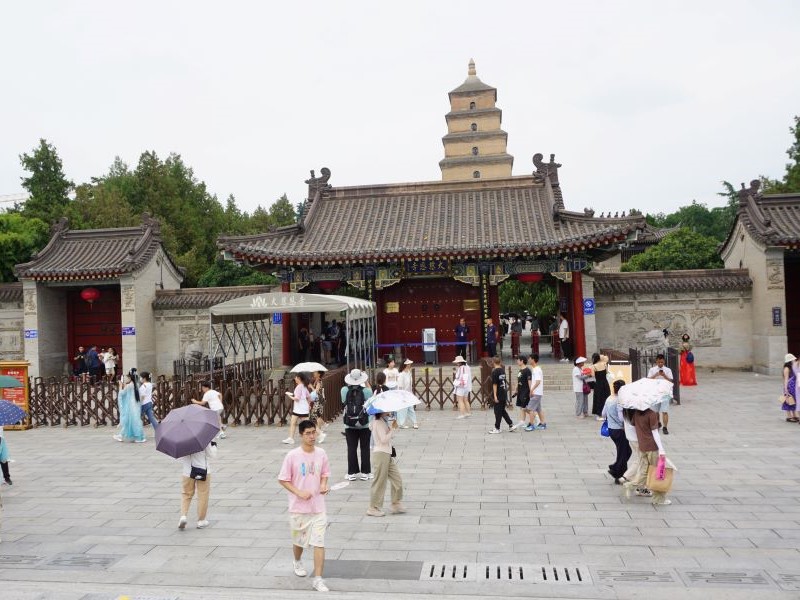
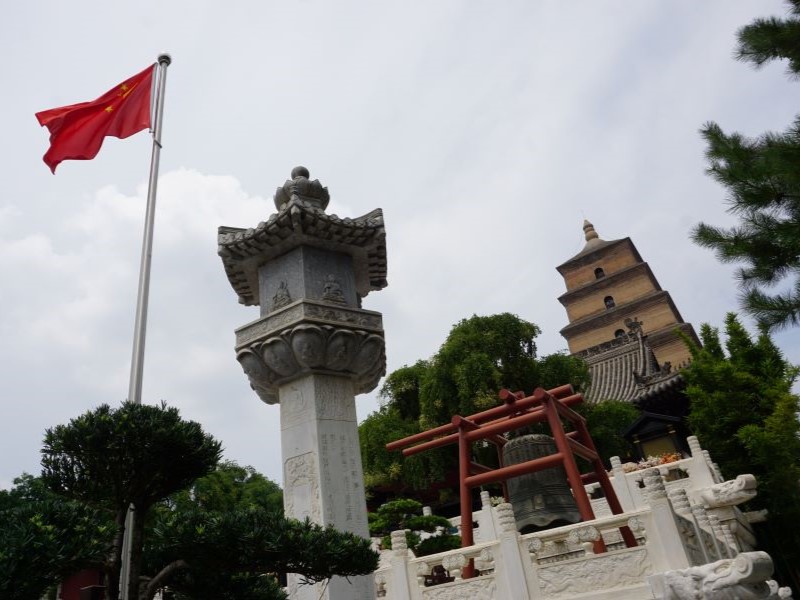
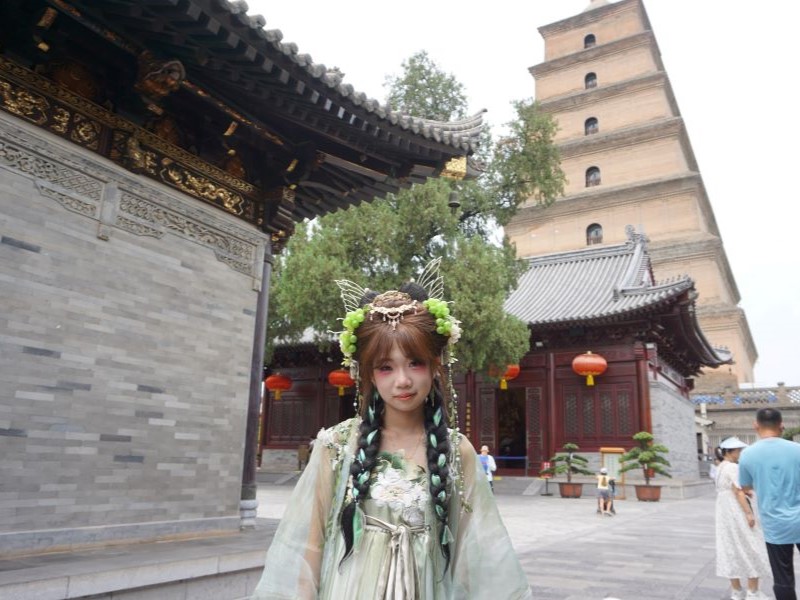

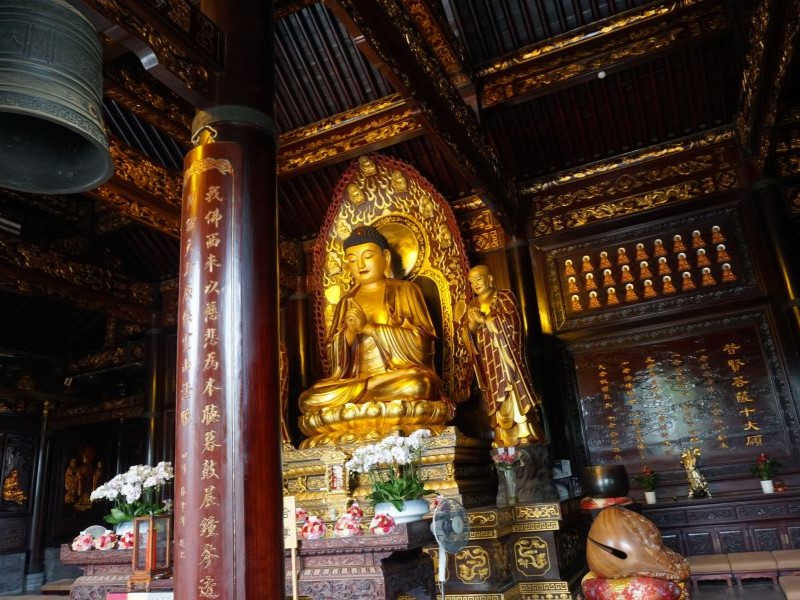
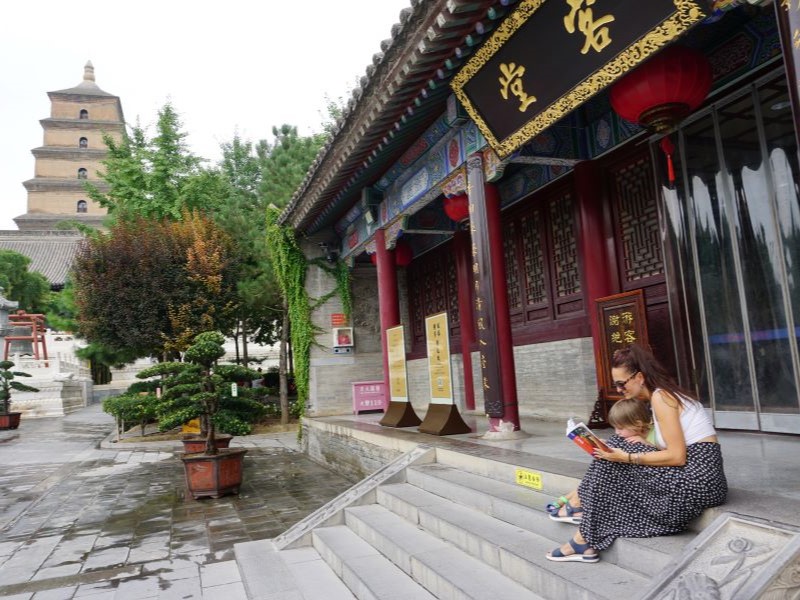
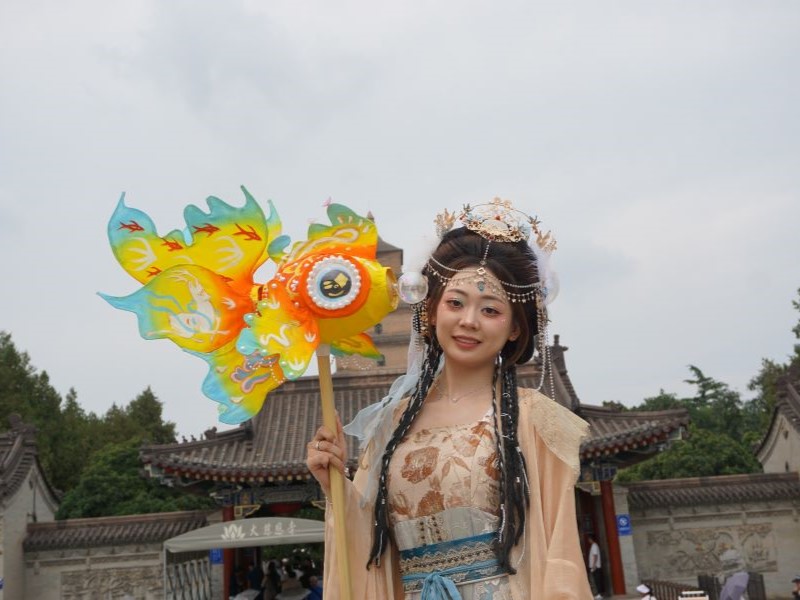
At six in the morning we leave on a bullet train to Shanghai…
We will spend 4 days here. It is a megalopolis that has achieved goals unimaginable for the rest of the country. Let yourself be seduced by the youthful charm of Shanghai, unbridled shopping, one mall next to another, futuristic skyscrapers and a sea of people everywhere.
The center of Shanghai is divided into two areas: Puxi (west of the Huangpu River) and Pudong (east); the main attractions of the city are concentrated in Puxi which represents the authentic soul of the city, here there is also the Bund (the road considered the Chinese Wall Street), born as a towpath used to haul barges loaded with rice, it was first transformed into a majestic road flanked by bank buildings and then it established itself as the hub of the gastronomic and commercial scene... needless to say that in the late afternoon and evening you will sail along a sea of people, in the true sense of the word, who will take you directly to the edge of the river to admire the superb skyline that has made this city so famous.
If you happen to be here on the weekend, don’t miss the chance to pop into People’s Square Park, where you’ll find lots of people holding sheets of paper written in Chinese. Of course, if you try to take a picture of one of these sheets and translate them with a goggle lens, you’ll discover that they’re actual presentations of men and women looking for marriage: physical data, qualities, possessions, qualifications, etc. are listed, and if you find the right match, then you can think about the next step: the introductory meeting! A sort of marriage agency in all respects!
Jade Buddha Temple
Built only 100 years ago, this temple is one of the few Buddhist monasteries still active. Its masterpiece is the Jade Buddha, a light green statue almost 2 meters high. It is said that it was Hui Gen, a monk who ventured into Myanmar passing through Tibet, to bring this statue back here!
This wonderful statue seems to gaze ethereally at visitors from inside its case.
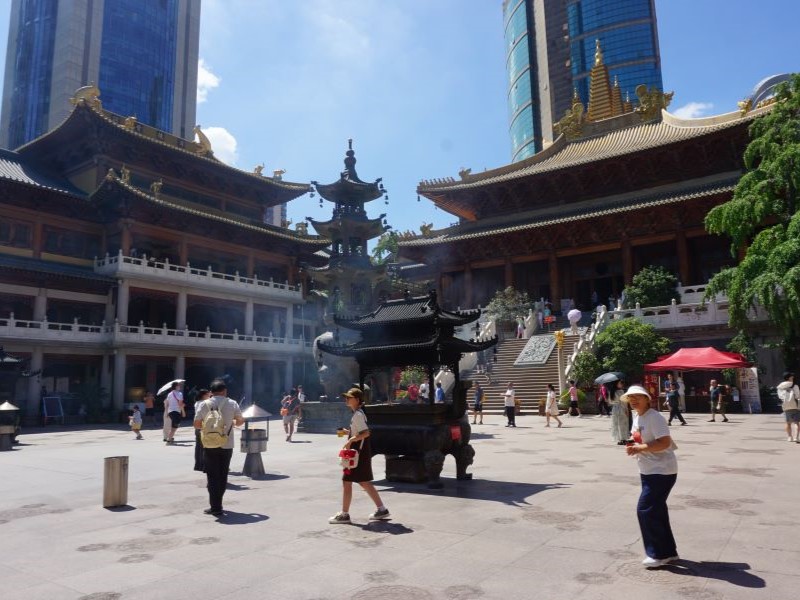
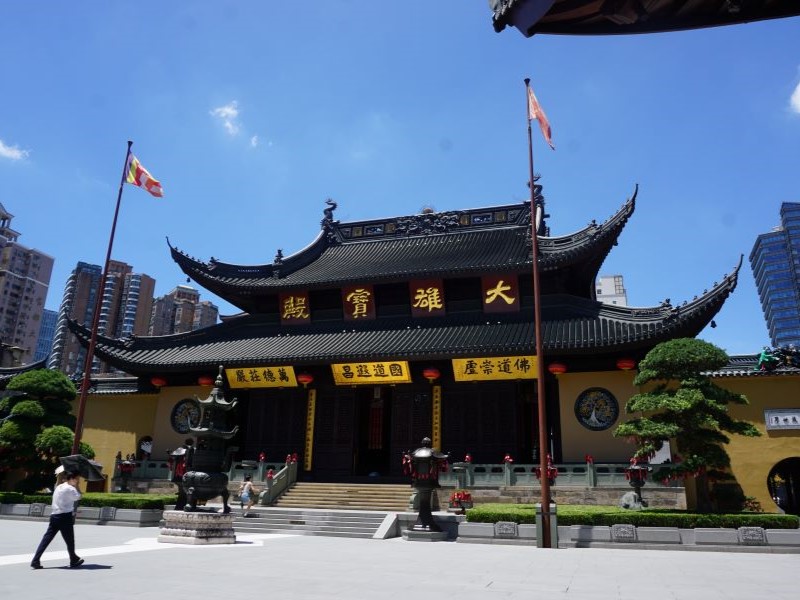
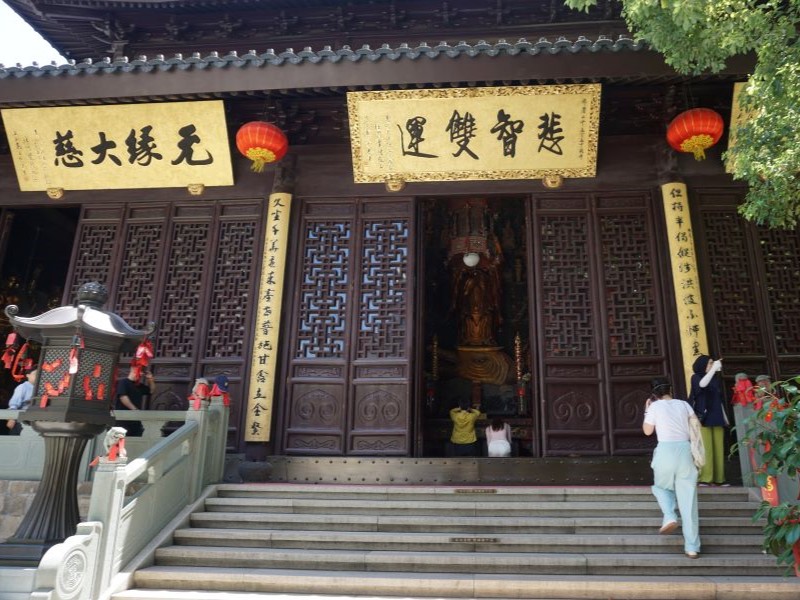
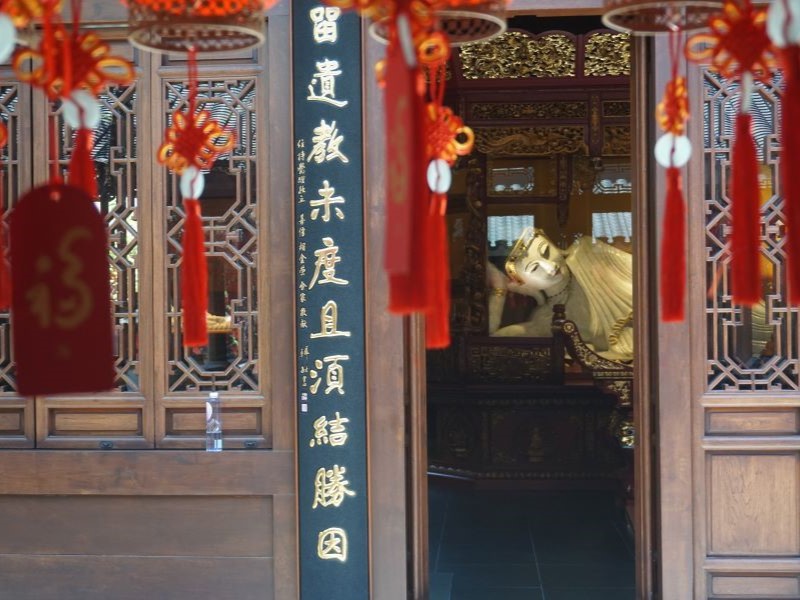
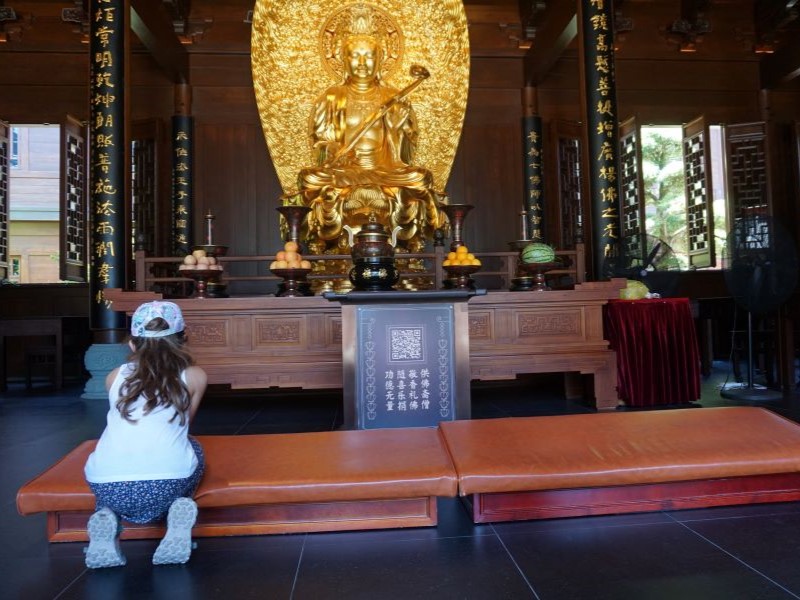

We turn the page and reach the Xintandi district. It has existed for less than 10 years but has already become an icon of Shanghai. An elegant complex of shops and restaurants consisting of several blocks of “shikumen” (two-story houses with a stone arch at the entrance built in the early 1900s) and now renovated, it was the first real estate development project in the city that demonstrated that historical architecture does indeed have an economic value.
Now it is a very expensive neighborhood frequented mostly by wealthy people who go shopping or dine in the most trendy restaurants.
It's time to go up to the 88th floor of the Shanghai Tower, the elevator will take you there in a few seconds to admire the entire city from 350 meters but even more one of the most romantic sunsets of the whole trip!
An hour by taxi from Shanghai brings us to Zhu Jia Jiao, a fascinating maze of alleys and bridges dating back to the Ming and Qing dynasties, overlooked by buildings of the ancient village (Guzhen), whose alleys are filled with the aroma of stinky tofu!
We take a boat to experience this from another point of view along the Cao Gang River.
We cross the wonderful five-span Fangsheng Bridge, dating back to 1571 and built, according to tradition, thanks to the funds raised by a monk who spent 15 years begging for the money necessary to complete the work.
Along Bei Dajie, the main street, there are food stalls that sell a bit of everything, from pig's trotters to large durians! We recommend the combined ticket that allows you to visit especially the "Garden of the inseparable hearts" and the "Kenzi garden", two ancient complexes with zen gardens of immense beauty that instill a unique sense of peace and relaxation!
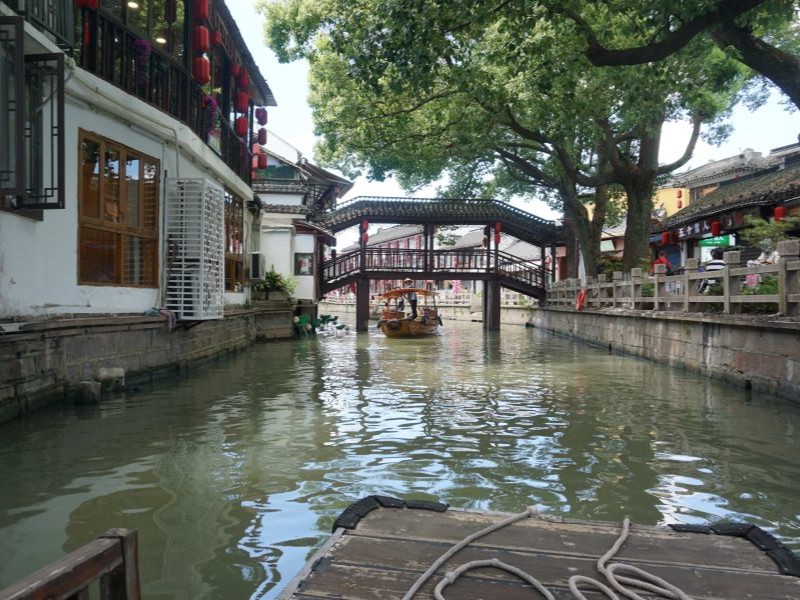

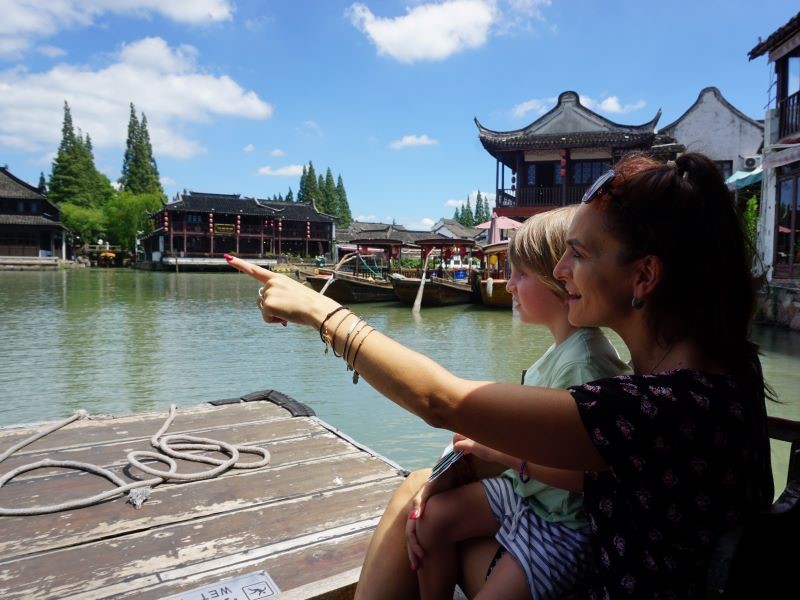
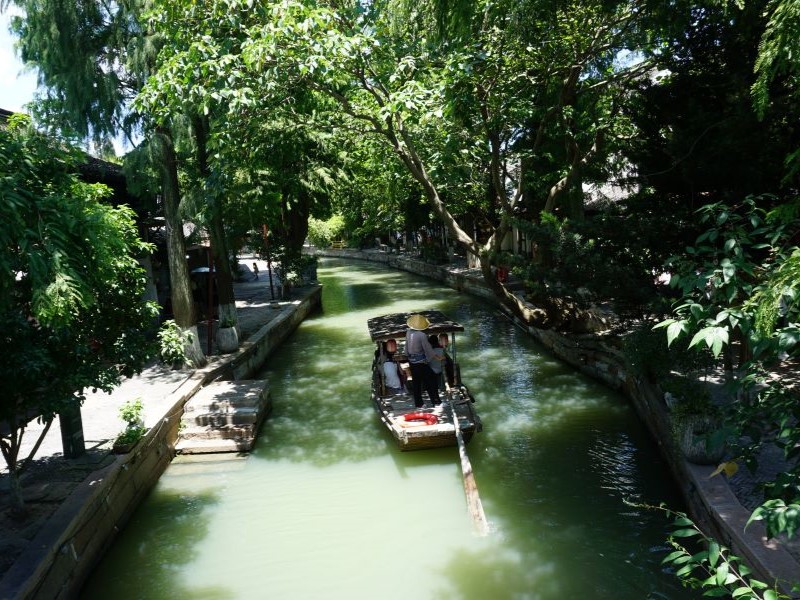

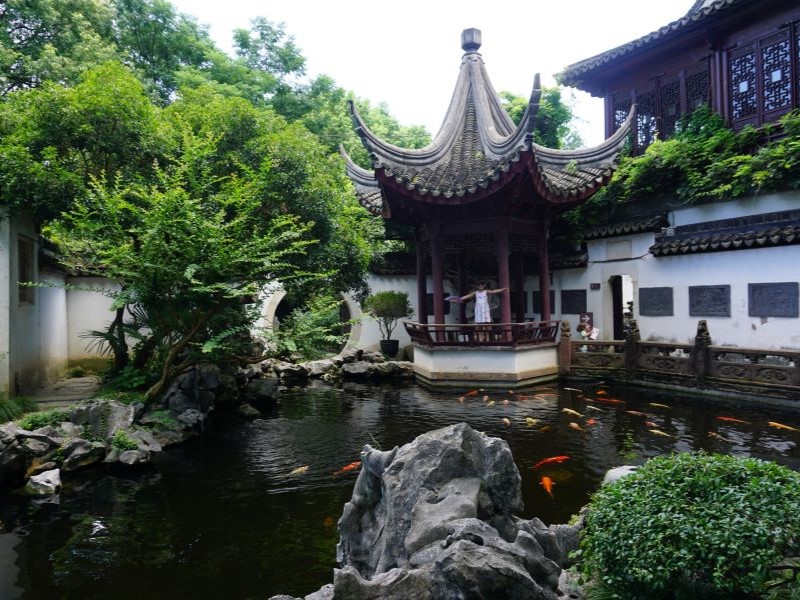
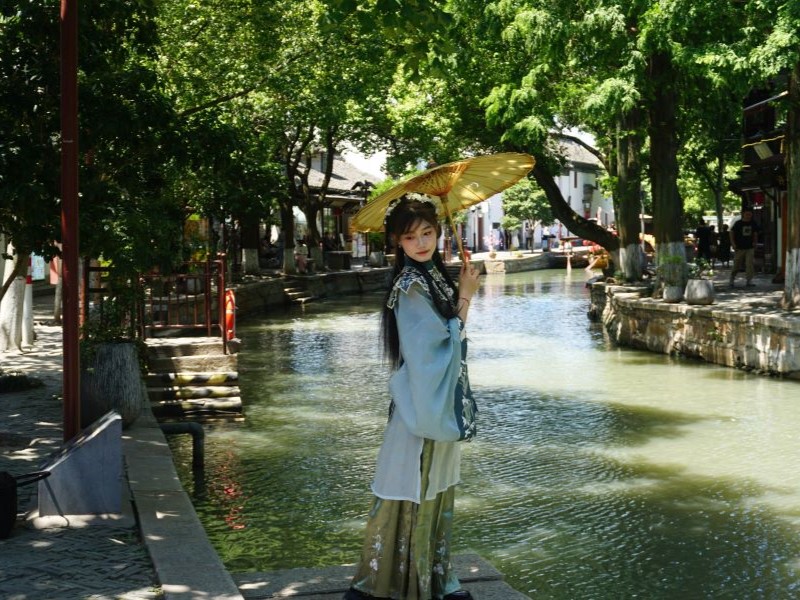
We return in the evening to the megalopolis of Shanghai and in particular to the Yu Garden area just when it begins to come alive with lights, young people and lots of street food! We taste the giant ravioli savoring its internal nectar with a straw... but how good is Chinese cuisine?
Mandarin Yu Garden, with its shady corners, the sparkling ponds where carp swim, the colorful pavilions, the pine trees that sprout melancholically between the rocks.
We dive back into the bazaar to enjoy one of the best lunches of the trip…
This evening we leave Shanghai and return to the capital by night train.
We love travelling at night in these comfortable and safe trains!
Summer Palace.
This immense estate, where emperors once spent the summer to escape the unbearable heat of the imperial city, deserves an almost full day's visit given its size.
It is a grandiose complex of temples, gardens, pavilions, bridges, stupas and the large Kunming Lake created in the 18th century by Emperor Qianlong and 100,000 workers as well as hills from whose peaks you can enjoy beautiful landscapes and paths ideal for relaxing walks.
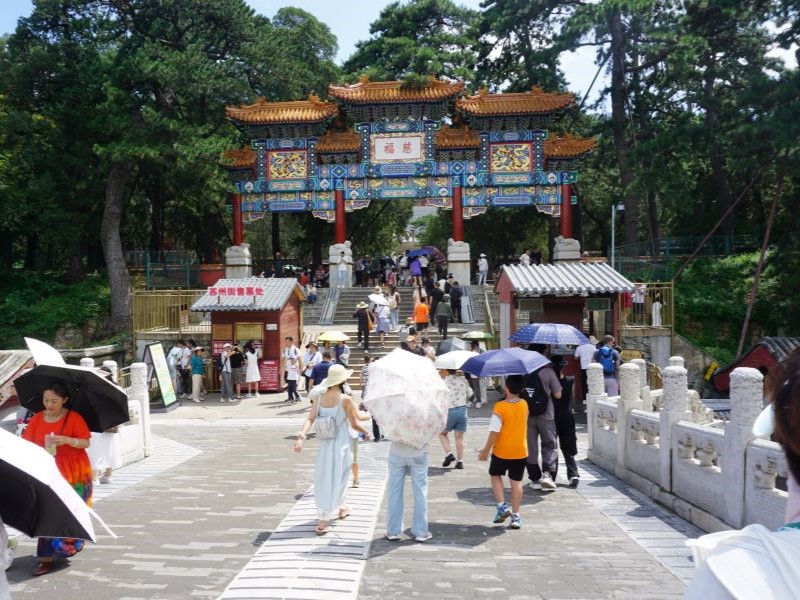
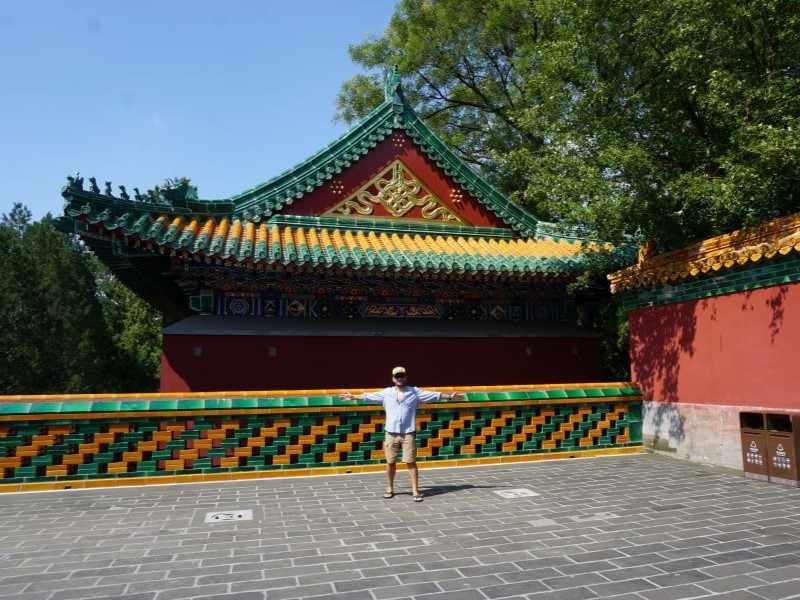
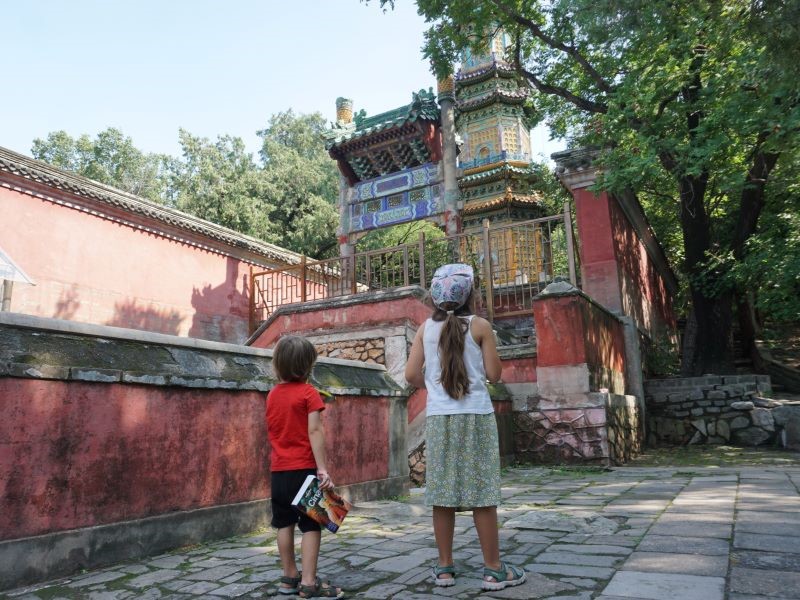

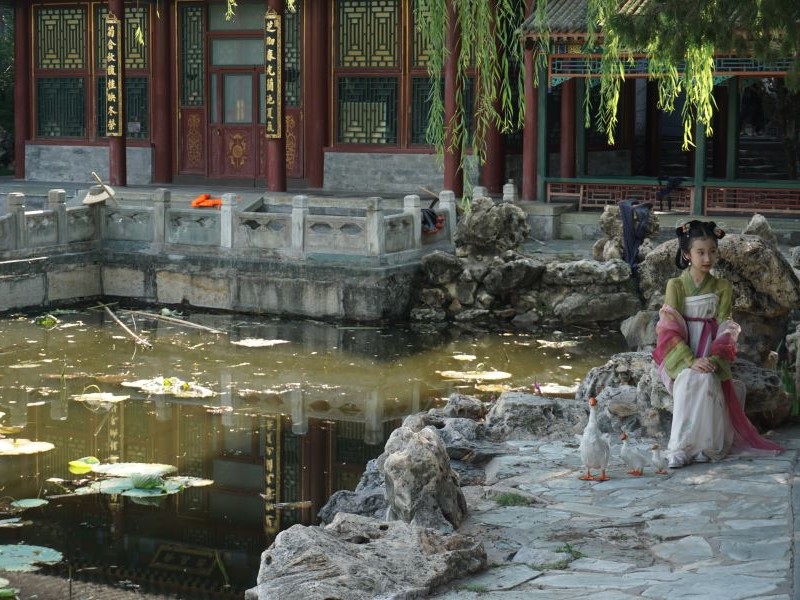
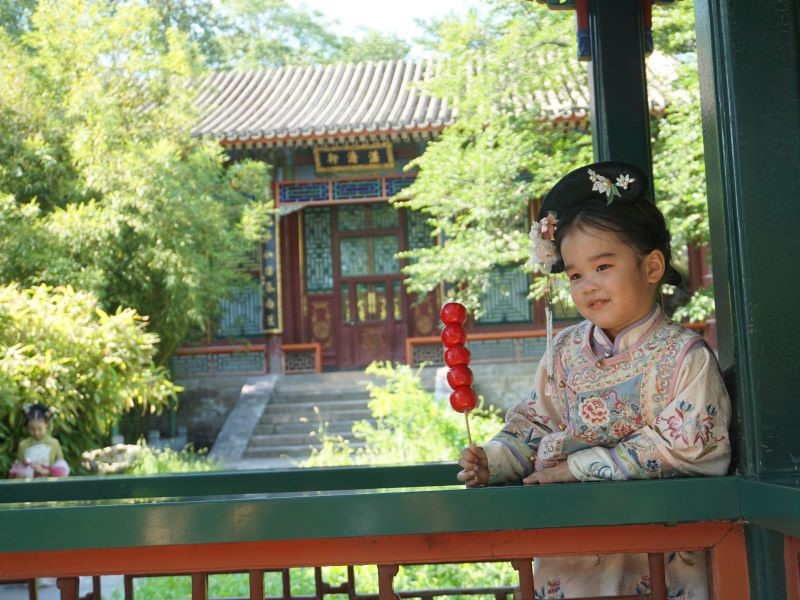
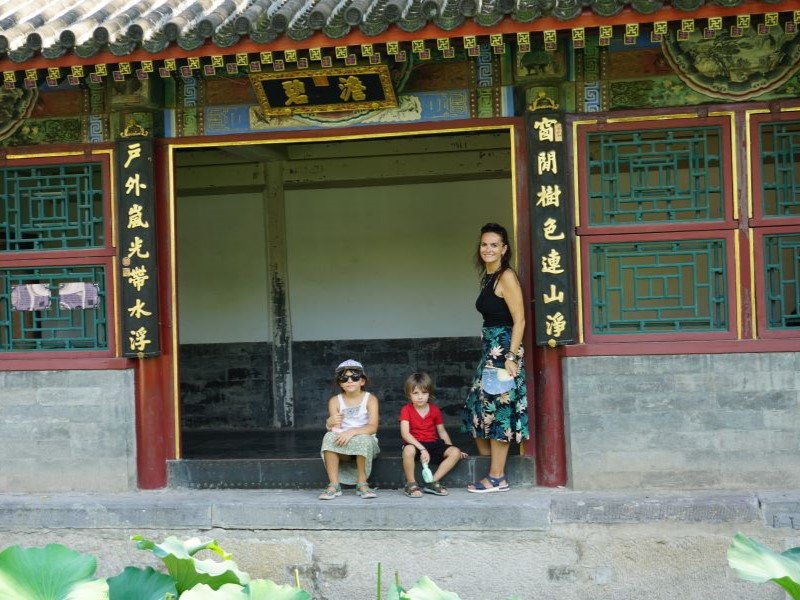
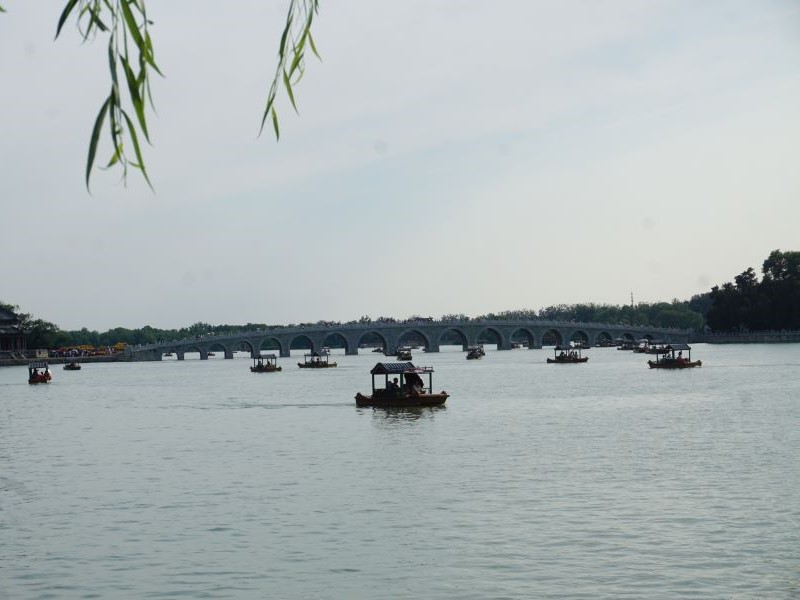
Temple of Heaven
Also known as the Temple of Heaven, it is an iconic site in Beijing, rich in historical and cultural significance. This extraordinary complex of religious buildings served as a place of ceremonies and prayers for the Emperors of the Ming and Qing dynasties.
Built in 1420, the same year as the Forbidden City, the Temple of Heaven was the place where the emperors, considered sons of heaven, performed annual rites to pray for abundant harvests and the prosperity of the country. These ceremonies were crucial because it was believed that the harmony between heaven and earth depended on the emperor himself.
Last evening in the youngest area of Beijing: Qianmen, near Tiananmen Square and a rich area full of people, young people, street food, pleasant chaos!
We easily reach the airport by metro: the express train that connects the capital with the international airport is very comfortable and super cheap (about 4 euros per person)!
Have a good trip
Error: No feed found.
Please go to the Instagram Feed settings page to create a feed.
2 Responses
Grazie ragazzi per aver trovato il tempo per scrivere e pubblicare questo favoloso resoconto in un momento così delicato! Con l’apertura del paese ai visitatori europei senza necessità di visto per viaggi inferiori ai 15 giorni ci è stata data una grande opportunità…e noi la sfrutteremo!!!
Ben rientrati e ancora grazie… Giusy e Ciccio!
Ciao cari ragazzi! Sì, è un’ottima occasione ora per visitare questo immenso e super interessante Paese.